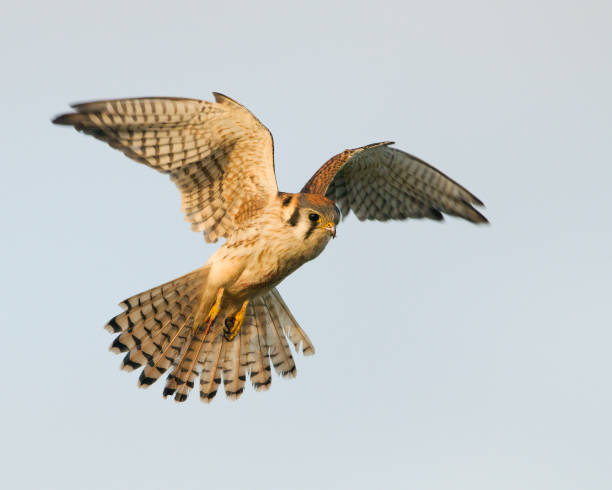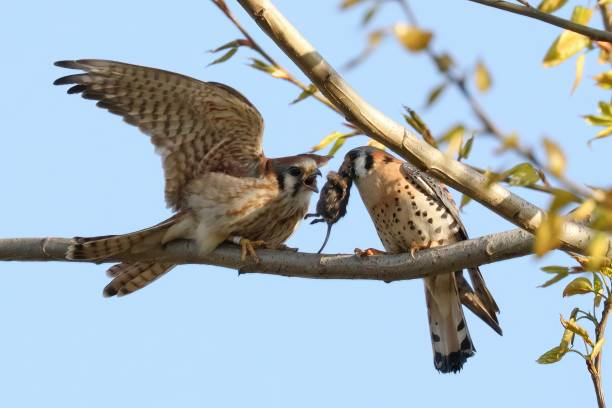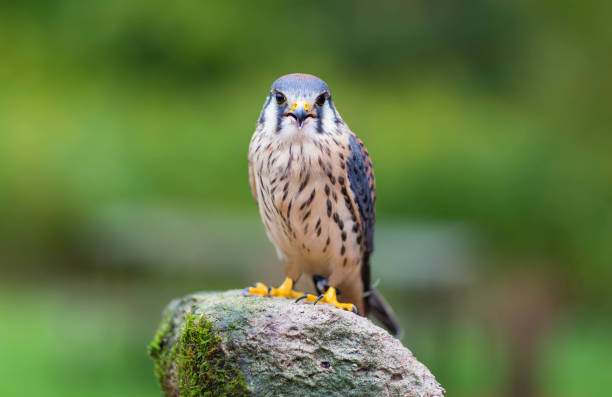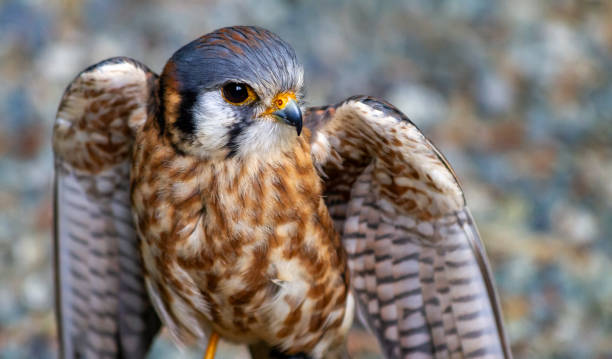Table of Contents
Scientific Classification
| Kingdom | Animalia |
| Phylum | Chordata |
| Class | Aves |
| Order | Falconiformes |
| Family | Falconidae |
| Genus | Falco |
| Species | Falco sparverius |
| Scientific Name | Falco sparverius |
Description
The American kestrel (Falco sparverius) is the smallest and most colorful falcon found in North America. Its plumage is quite striking, with males displaying a rusty-red back and tail complemented by blue-gray wings. In contrast, females exhibit more muted brown tones. Notably, they have two black streaks on their faces, known as “mustache marks,” which distinguish them from other birds of prey. Weighing between 80 to 165 grams and measuring 22 to 31 cm in length, this bird is lightweight and incredibly agile, making it a skilled hunter.

Distribution
American kestrels are found throughout North and South America, with their range extending from Canada all the way down to the southern parts of Argentina and Chile. They are highly adaptable and thrive in various climates, making their home in places as diverse as the frigid landscapes of Alaska and the warmer regions of Central America.
Habitat
This species flourishes in open environments like grasslands, meadows, deserts, and agricultural lands. They frequently perch on power lines, fence posts, or tree branches, scanning the ground for potential prey. Kestrels can also be found in suburban and urban settings, nesting in parks or at the outskirts of towns.
Diet
The American kestrel is a carnivorous bird that primarily feeds on insects, small mammals, and other birds. Its typical prey consists of grasshoppers, crickets, beetles, voles, mice, lizards, and even small songbirds. The kestrel employs a unique hunting technique, hovering in place before swooping down to catch its prey with its sharp talons.

Behavior
Kestrels are known for being solitary hunters and are very territorial, particularly during the breeding season. Unlike many other raptors, they can hover in mid-air while searching for prey. Their distinctive calls, a rapid “klee-klee-klee,” can often be heard resonating in open fields. Kestrels use a combination of vocalizations and body language, such as wing flicking and tail bobbing, to communicate.
Lifespan
In the wild, American kestrels live for about 3 to 5 years. Some can even reach up to 11 years. Kestrels can live longer in captivity with proper care and protection from predators.
Reproduction and Lifecycle
Males engage in aerial displays and present food to females to strengthen their bond. Nesting typically takes place in tree cavities, abandoned woodpecker nests, on cliffs, or in artificial boxes. The female lays between 3 to 7 eggs, which she incubates for roughly 30 days. After hatching, both parents share the responsibility of feeding the chicks. The fledglings leave the nest after about 30 days but continue to rely on their parents for a few weeks before becoming fully independent.
Predators
Kestrels are nimble birds, but they face threats from larger raptors such as hawks, owls, and eagles. Additionally, snakes, raccoons, and other mammals may invade their nests to eat their eggs or chicks. To escape from predators, kestrels depend on their quickness, natural camouflage, and sharp eyesight.
Adaptations
The American kestrel has developed various adaptations that enhance its prowess as a predator:
Exceptional Vision: They are capable of seeing ultraviolet light, which aids in tracking rodent urine trails.
Sharp Talons and Beak: These features are designed for quickly killing and consuming prey.
Lightweight Build: This characteristic provides remarkable speed and agility in the air.
Facial Markings: The distinctive black “mustache” streaks help reduce glare, improving hunting efficiency in bright sunlight.
Hovering Ability: This skill allows them to accurately spot prey from above.
Conservation Status
American kestrels are not considered endangered, but their populations are decreasing in certain regions. This decline is primarily due to habitat loss, pesticide application, and climate change. Conservationists encourage individuals to install nest boxes and maintain open spaces, which can support kestrel populations. Organizations like the Peregrine Fund and the American Kestrel Partnership monitor kestrel numbers and actively work to safeguard their habitats.
Conclusion
The American kestrel, though small, is a remarkable bird of prey. It possesses impressive hunting abilities and shows a strong capacity for adaptation. This falcon is a widely recognized species that plays a crucial role in maintaining ecological balance by managing populations of insects and rodents. We can contribute to the survival of this vibrant falcon in the wild for generations to come. Let’s get involved in conservation efforts.



